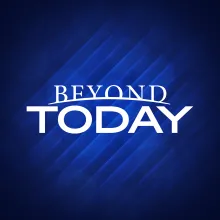2 Chronicles 34:29-33 and Related
Josiah commands the restoration of proper worship
Purging the Land
"Josiah's humble, obedient response to the book was and remains a model of how all people should respond to God's revealed Word. Josiah listened to Scripture, allowed its words of truth to judge him, and humbly confessed that he had neglected God's commands (2 Chronicles 34:18, 19). After learning more about its truths (2 Chronicles 34:21), he shared the Scripture with others and led them in following it. He had the book read before the entire nation and led the Israelites in recommitting their lives to the Lord (2 Chronicles 34:29-31)" ("INDepth: The Book of the Law of the Lord," Nelson Study Bible, sidebar on 2 Chronicles 34).
In 2 Kings 23:3 Josiah makes his covenant standing by a pillar—or on a pillar, as it could also be translated. This is referred to as his place in 2 Chronicles 34:31. It appears to be the coronation pillar stone mentioned in the crowning of Joash (see 2 Kings 11:14).
Josiah then essentially imposed God's law on the people. Imposition may seem harsh, but we read in these passages that 18 years after Josiah came to the throne, there were still plenty of pagan traditions and idolatrous practices throughout Judah (2 Kings 23:4-20). This chapter highlights again how far the nation had sunk.
According to The Expositor's Bible Commentary, although the Hebrew word translated "perverted persons" in verse 7 "denotes the 'male shrine prostitutes,' probably the term is used generically for prostitutes of both sexes who were employed in the heinous Canaanite fertility rites" (footnote on verse 7). Even though God forbade the practice (Deuteronomy 23:17) and reforming kings abolished it, it always came back.
The references in 2 Kings 23:8 to Geba (northern Judah) and Beersheba (southern Judah) show that high places (a generic term for worship places, not necessarily elevated) had to be rooted out everywhere. Josiah then takes steps to root out the most heinous remains of pagan worship, defiling Tophet, the place of child sacrifice in the Valley of Hinnom, and removing the idolatrous objects from God's temple: "Apparently, the references in [2 Kings 23:11-12] are to various ceremonies involved in the worship of the sun, moon, and stars. Chariots and horses played a big part in the worship of the sun, probably because of the idea that the sun god drives across the sky in his chariot. In the literature of other nations, the sun god is pictured riding a winged chariot. Here, the horses and chariots mentioned were probably large statues, though they may have been miniature figurines used in astral worship. Rooftop shrines like those described in verse 12 were also related to this same pagan cult, which was introduced by King Ahaz" (Russell Dilday, Mastering the Old Testament, 1987, Vol. 9, p. 484). Indeed, in excavations "small horses with solar disks on their foreheads have been found both at Jerusalem and Hazor" (Nelson Study Bible note on verse 11).
Josiah started his reforms by defiling the cult places of worship and filling them with human bones (verses 14-15). Then he carried out what he had been prophesied to do by name long before in burning human bones on the pagan altar at Bethel, defiling it forever (verses 16-18; see 1 Kings 13:1-3). And he did likewise with the pagan altars throughout the land. It should be noted that this was done throughout even Samaria (2 Kings 23:19), the territory of the northern kingdom, which was recently occupied—starting about two years before the current major purge—by a major contingent of Scythians, that is, Israelites.
Supplementary Reading: "Josiah--A Kingdom Returns to God”, Good News Magazine, Jan.--Feb. 1999, pp. 25-27.



Beyond Today Bible Commentary: 2 Chronicles